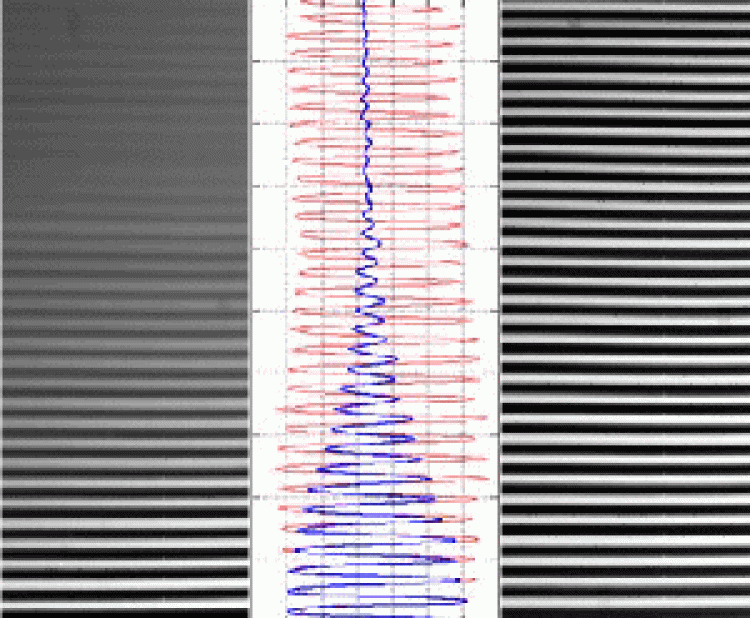Extended Depth of Field Imaging
The following images are of a 1-D square wave, with a line pair width of 1mm, that was inclined with respect to the optical axis. Inclining the square wave target forces the top of the target to be misfocused and hence suffer a serious loss of contrast.

Image from a traditional F/6.3 system (left), and our optical/digital extended depth of field F/6.3 system (right), with traces through the center of both images. (center) The blue line is a trace through the standard image, and the red line is a trace through the filtered extended depth of field image.
Vertical slices or traces through the center pixels of the images produced by the traditional system and our extended depth of field system are illuminating. These traces clearly display the loss of contrast present in the traditional system. Such loss of contrast is not present in the extended depth of field system. One might also note the phase shift that takes place in the (blue) trace through the standard system image as it goes out of focus. This phase shift does not occur in the (red) trace through the extended depth of field image due to the focus invariance.
By stopping down the aperture of the traditional system, all parts of the image can be made in focus. But, because of the large degree of misfocus, the aperture diameter must be decreased by approximately a factor of 6. This leads to a required increase in the exposure time (or illumination level) by a factor of 36. In addition, the spatial resolution of such a stopped down system also decreases. Theses penalties are not imposed with our optical/digital extended depth of field system (see Depth of Field/Depth of Focus vs F# Trade-off).

